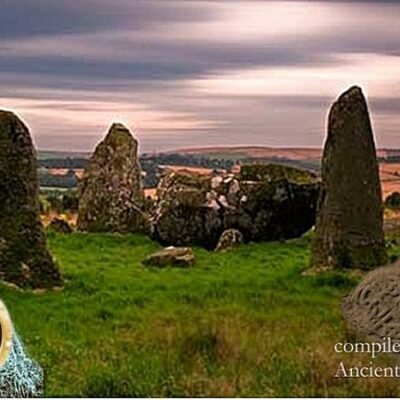Conny Waters – AncientPages.com – During recent excavations at the Sant’Andrea Priu archaeological site in Bonorva, Sardinia, archaeologists uncovered three previously unknown Domus de Janas.
These are pre-Nuragic rock-cut chamber tombs found in Sardinia, known as ‘House of the Fairies’ or ‘House of Witches’ in Sardinian. The tombs resemble houses and were constructed by the people from the San Ciriaco through Ozieri cultures and later groups.
Interior of one of the Domus de Janas of Sant’Andrea Priu, Bonorva. Image credit: Antonio Taramelli – Public Domain
Dating from 3400 to 2700 BC, these structures belong to the late Neolithic, Chalcolithic, and early Bronze Age periods, including the Bell Beaker era. The newly discovered Domus de Janas—designated as Tombs XVIII, XIX, and XX—bring the total number of hypogea at this site to twenty. This discovery significantly enriches our understanding of Neolithic funerary practices and society in Meilogu.
Credit: Sardinia’s Ministry of Culture
These findings are part of a broader excavation project managed by Sardinia’s Ministry of Culture. The new tombs form a fan-shaped arrangement radiating from Tomb XIII, known as the “Tomb of the Hearth.” The Ministry noted that terrain features between Tomb XII and Tomb XIII suggest another unexplored tomb may exist.
Tomb XVIII includes a cleanly cut corridor (dromos) with artifacts such as pickaxes, a small greenstone axe, a spindle whorl, and obsidian fragments. It has a quadrangular chamber with a centrally carved hearth leading into another main rectangular chamber with an additional smaller chamber on one side.
Tomb XIX is smaller, featuring an external pavilion that leads to a rectangular internal chamber. This chamber opens into another, rounded, niche-like chamber containing obsidian fragments and ceramics, such as a miniature vase.
Credit: Sardinia’s Ministry of Culture
Tomb XX is more intricate, featuring an entrance that leads into seven chambers. One features painted bands while others contain over 30 ceramic artifacts from Roman times—including jugs, plates, and lamps—which will be restored at Li Punti’s Restoration Centre.
Further archaeological research will continue in areas where Roman and early medieval settlements existed below this site.
The archaeological complex of Sant’Andrea Priu is of exceptional significance, not just locally but across the entire Mediterranean region. This site features a prehistoric necropolis and evidence of Roman occupation, including repurposed underground chambers, a settlement with paved streets and sewers, and a porticoed bathhouse that remained in use until Late Antiquity and the Early Middle Ages.
Credit: Sardinia’s Ministry of Culture
During this time, the main hypogeum, known as the “Tomba del Capo” (Cape Tomb) due to its impressive size, was converted into a rock church that now houses the island’s most significant collection of Byzantine paintings. The site serves as a historical palimpsest, encapsulating millennia within just a few meters. Archaeological investigations at Sant’Andrea Priu began in 1826, with Canon Giovanni Spano initiating excavations in 1849.
See also: More Archaeology News
These efforts were followed by systematic research led by Antonio Taramelli in the early 1900s and have continued since the 1970s through various development, restoration, and enhancement projects conducted collaboratively by the Municipality and the Ministry of Culture.
Visitors are now granted immediate access to these recently discovered tombs for viewing purposes.
Written by Conny Waters – AncientPages.com Staff Writer









